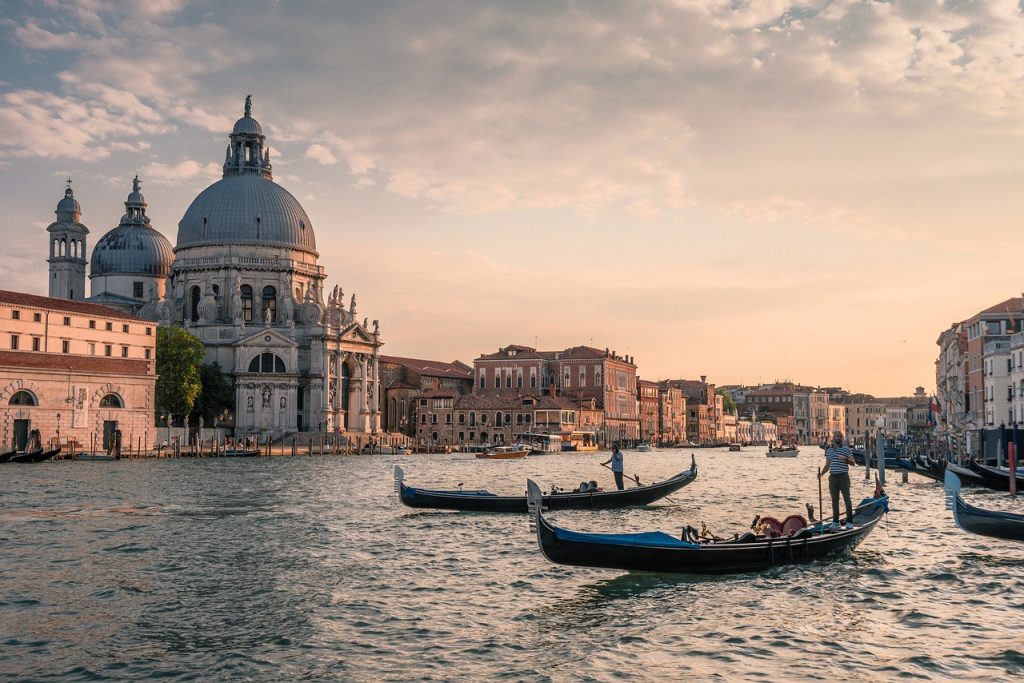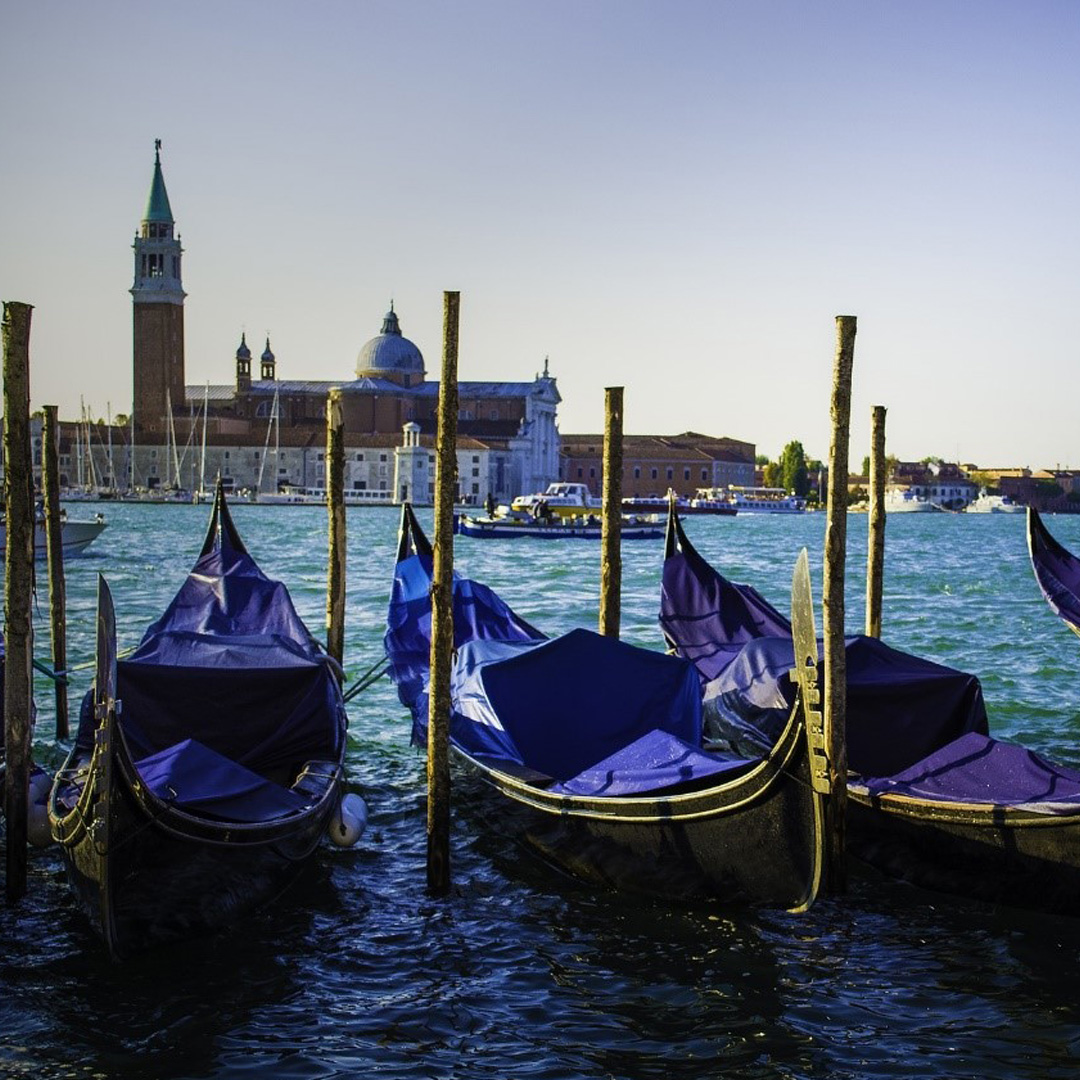From my earliest childhood days, I have been entranced by the magic woven into the very fabric of Venice. Often depicted as a realm of unparalleled Renaissance and Baroque splendour, its gilded beauty seems to rise miraculously from the sea—a sea that, with each passing century, persistently gnaws at its foundations. Countless voices have sighed in wonder at the mention of Venice, yet almost inevitably, a lament follows: What a pity that Venice is gradually sinking.
During my parents’ era, the song Gondoli, Gondola held a special place in their hearts, brimming with that old-fashioned Italian flair that once captivated Europe during the golden age of canzone. As a child, I struggled to grasp its meaning. To me, it was no more than a lively ode to the charming boats gliding through Venice’s intricate canals. Little did I know that beneath its melody lay a tale of love—a nocturnal dance beneath the crescent moon, where dreams of romance set sail upon the Venetian waters. Though I didn’t yet understand its essence, the song remained an enigma, a poetic whisper of the city’s allure that left a lasting imprint on my soul.
Venetians Are More Than Mere Italians
As the vaporetto, the boat-bus, glided gracefully between the island of La Giudecca on the right and the historic centre on the left, a scene unfolded before my eyes, etching itself into my memory. The golden light shimmered on the water, the outlines of domes and palaces blurred slightly, like a Renaissance painting brought to life. In that moment, the line between reality and reverie dissolved. Only in Venice can such an experience exist—a city like no other on earth.
Yet this ephemeral beauty is threatened, as each year the city sinks a little deeper. Goethe famously described Venice as the “greatest republic of beavers,” built upon millions of compacted logs driven into the marshland of a lagoon, nestled between the Po and Piave rivers in the northern Adriatic. A city both fragile and enduring, defying nature even as nature seeks to reclaim it.
As the mist rose from the lagoon on that warm day, the city’s dreamlike quality intensified. It was as though an old postcard had come to life—palaces and churches adorned with white stone and golden frames, facades tinged with soft rose and warm orange hues. Venice is a distant world, surreal in its beauty, catching visitors off guard with its quiet, haunting charm.
Amidst these surroundings, the voices of my friends faded, replaced by the gentle whispers of the waves lapping against the wooden pilings. It was as if the water itself was murmuring the city’s ancient name: Serenissima, Serenissima…

Serenissima
As the vaporetto carried me towards the Centro Storico, a myriad of thoughts swirled through my mind. Here, in the very heart of what was once the most formidable republic in the Mediterranean, the Venetians wear their past like a badge of honour. Their city, built from nothing but ingenuity and sheer will, stands as a monument to their power and ambition. They are more than Italians—they are Venetians, a people apart, bound to their unique heritage.
Venice has been called many things—the City of Light, the City of Water, the City of Bridges, La Dominante. Yet in that moment, she was simply Serenissima—the most serene. No longer a force in the world, no longer the seat of a mighty republic, but a sleeping beauty, drifting through history. She is a city beyond conventional notions of good and evil, a place built on sacrifice and splendour. Entire forests were felled to support her foundations, mountains stripped bare for her grandeur. Venice, the most exquisite princess of the Renaissance and Baroque, is both a triumph and a tragedy, a masterpiece shaped by human ambition and the passage of time.
And When the Night Falls…
As the sun sinks below the horizon, Venice undergoes a transformation. The lively city of the day retreats into the shadows, slipping into an air of mystery. The Serenissima, once vibrant and visible, becomes a figure behind a mask, much like those of her famous Carnival. In the glow of the moon, the city takes on an otherworldly aura—its canals, once bustling, now glistening with an eerie, silent beauty.

Venice at night is something else entirely. It is no longer just a city; it is a dream suspended in time, a fleeting vision of something lost and yet ever-present.

